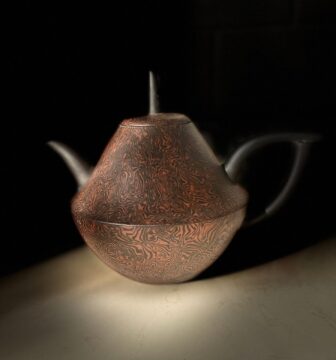by Leanne Ogasawara

1.
All I wanted, I told him, was “the perfect teapot.” Just one would be enough, I said, but it had to be perfect (1) — as if a teapot could make everything else in the world okay. A seemingly simple task, and yet finding it was elusive as any great chase.
My first demand was it had to be a Yixing zisha teapot. Valued since at least the tenth century in China, zisha pots are purple or reddish-brownish, unglazed stoneware that are so beautiful they will make you drool (2). The first thing I did was spend hours at the Flagstaff Tea Museum in Hong Kong. Studying the pots in their collection, I tried to narrow down exactly what I wanted in my own “perfect pot.” I learned all about the way zisha pots are hand-modeled out of what is extremely hard clay. Like any great Literati art, one artist alone is traditionally in charge of the entire process from start to finish, and therefore the artist’s seal will be affixed to the bottom of the pot as it is in every way that artist’s creation: one of a kind.
It was in Hong Kong where I’d first fallen in love with tea and stoneware pots. Even now, I never cease to marvel at how soft and warm stoneware feels in comparison to porcelain. Handling unglazed pottery is always a very sensual experience; porous and velvety, it’s like human skin. One of the reasons zisha pots are favored by Chinese tea masters is because the clay absorbs the fragrance and taste of the tea and over time the pot brings something of itself to every brewing, like antique oak barrels used for wine or the ground used in certain kinds of pickling. Read more »
